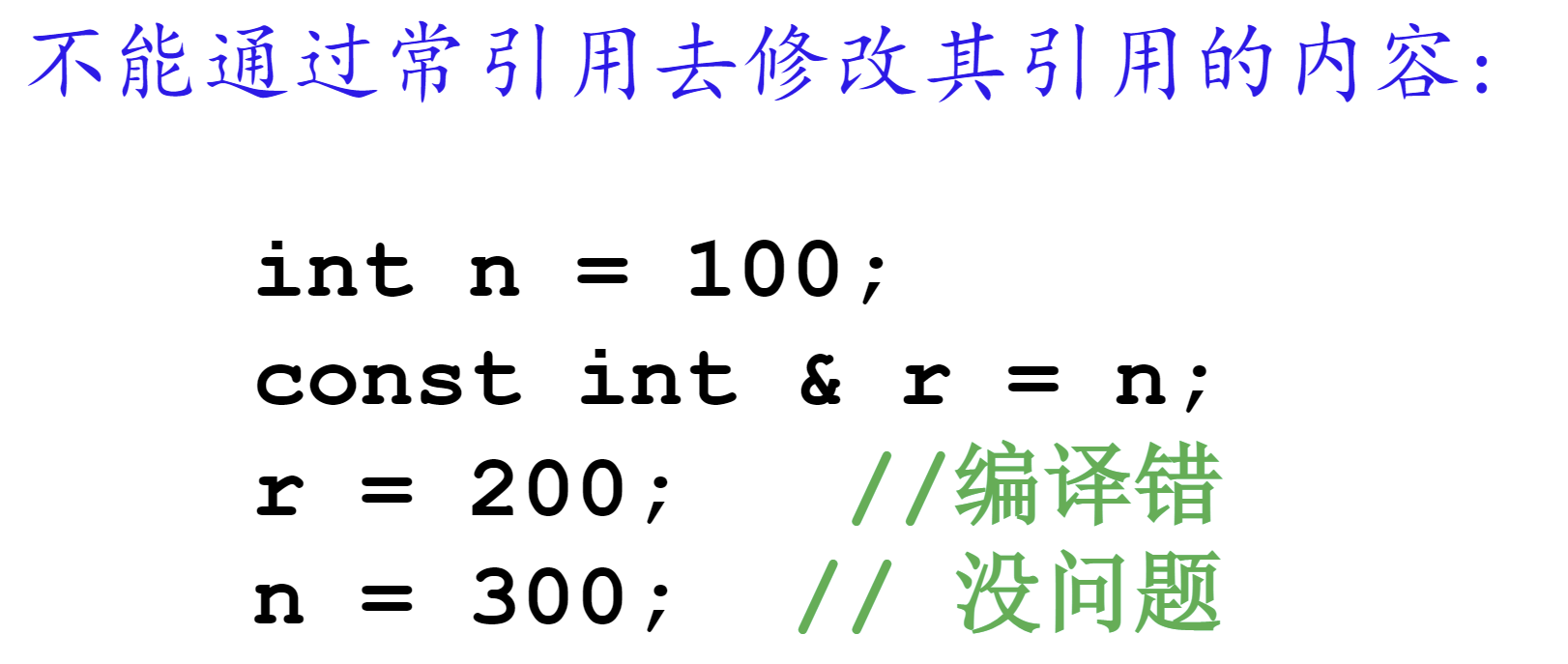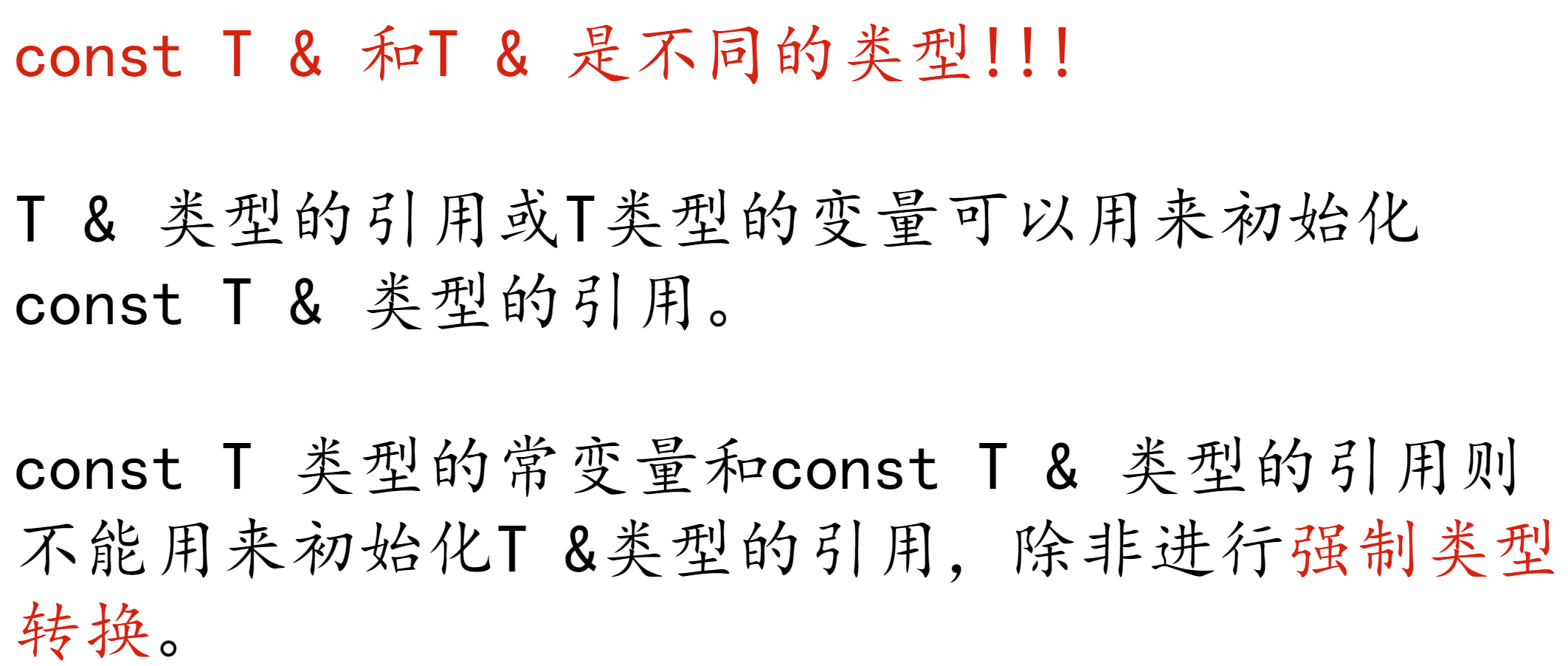引言
C++包含了C语言的全部语法,任何合法的C语言程序,都是合法的C++程序
C++还在C的基础上做了很多扩展,主要是为了实现面向对象编程和泛型编程
不过既然是第一章,先讲些和面向对象以及泛型关系不太大的扩展
引用的概念

#include<iostream>using namespace std;int main(void){int n=4;int &r=n;r=4;cout<<n<<endl;//4n=5;cout<<r<<endl;//5return 0;}
引用的性质

#include<bits/stdc++.h>//这是C++万能头文件,包含了目前C++所有核心头文件,包括/*#include <iostream>#include <cstdio>#include <fstream>#include <algorithm>#include <cmath>#include <deque>#include <vector>#include <queue>#include <string>#include <cstring>#include <map>#include <stack>#include <set>*/using namespace std;int main(void){double a=4,b=5;double &r1=a;double &r2=r1;//r2也引用ar2=10;cout<<a<<endl;//10r1=b;//r1没有引用b,这里仅仅进行赋值操作cout<<a<<endl;//5return 0;}
引用的应用
1.作为函数形参,在函数中修改外部变量的值(类似于指针)
#include<bits/stdc++.h>using namespace std;void valueExchange(int&,int&);int main(void){int a=4,b=5;valueExchange(a,b);cout<<a<<endl;//5cout<<b<<endl;//4return 0;}void valueExchange(int &x,int &y){int temp;temp=x;x=y;y=temp;return;}
2.作为函数返回值
#include<bits/stdc++.h>using namespace std;int n=5;int &setValue(){return n;}int main(void){setValue()=40;cout<<n;//40return 0;}
常引用


常引用和非常引用的转换

#include<bits/stdc++.h>using namespace std;int main(void){int n=5;int &r1=n;const int &r=r1;cout<<r;//编译通过,输出5return 0;}
#include<bits/stdc++.h>using namespace std;int main(void){int n=5;const int &r1=n;int &r=r1;//编译错误cout<<r;return 0;}

